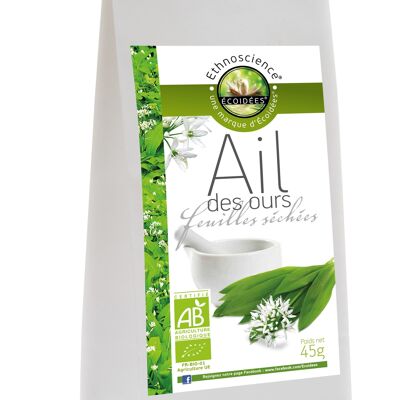


Wild Garlic: A Taste Treasure to Discover Dive into the captivating world of wild garlic, an aromatic herb with multiple facets and delights. Recognizable by its broad, green leaves, this wild plant, which flowers in the spring in the undergrowth, offers a delicate flavor and an intoxicating garlic scent, while preserving the sweetness of spring greens. With its tender texture and vibrant colors, wild garlic is not only a treat for the taste buds but also a real visual treat on your plates. Origins and traditions of wild garlic Used for centuries, wild garlic has its roots in the forests of Europe and Asia. Local people valued this plant not only for its taste, but also for its reputed medicinal properties. In France, this aromatic herb is often associated with regional gastronomy, particularly in the Auvergne-Rhône-Alpes region, where it is regularly celebrated during traditional festivals. Its harvest is often a moment of sharing with the family, anchored in the fledgling culture of spring. The benefits of wild garlic Rich in vitamins: wild garlic is an incredible source of vitamins A and C, as well as essential minerals like iron and potassium. Anti-inflammatory properties: known for its antibiotic properties, it stimulates the immune system and promotes digestion. Detoxifying effect: this plant helps eliminate toxins, thus purifying the body. Ébalance of flavors: its subtle taste enhances many dishes without overwhelming other flavors. Culinary uses of wild garlic In cooking, wild garlic is a delicious alternative to classic garlic. Here are some practical tips for taking advantage of this aromatic plant: Raw consumption: add it to your salads for a fresh, herbaceous taste. Infusion in oils: let leaves macerate in olive oil for a subtle flavor in your dishes. Use in sauces: Incorporate it into your creamy sauces for a taste punch. As a stuffing: use it as a garnish for your meats or fish. Original recipe ideas Wild garlic pesto: mix leaves with pine nuts, parmesan and olive oil for an exquisite spread. Wild Garlic Potato Soup: Sauté potatoes, add stock, then blend with wild garlic leaves for a creamy consistency. Wild garlic risotto: at the end of cooking, add chopped leaves for a touch of freshness. Mushroom and Wild Garlic Omelet: Add sautéed mushrooms and chopped leaves for a tasty omelet. Anecdotes and traditions In some cultures, wild garlic is also considered a symbol of renewal, often picked during Easter celebrations to signal the return of sunny days. Its harvest is traditionally celebrated in many regions, recalling the importance of wild herbs in cooking. Practical tips for chefs Do not overcook wild garlic, as this can alter its unique taste. Use fresh leaves to maximize their flavor, but be aware that it will keep for a few days in the refrigerator wrapped in a damp cloth. For an explosion of flavors, combine wild garlic with other spices such as coriander or cumin. In short, wild garlic is much more than just an aromatic herb. Its rich history, health benefits, and varied culinary possibilities make it a must-have in your kitchen. Let yourself be seduced by its captivating aromas and enrich your dishes with this wonder of nature.






























